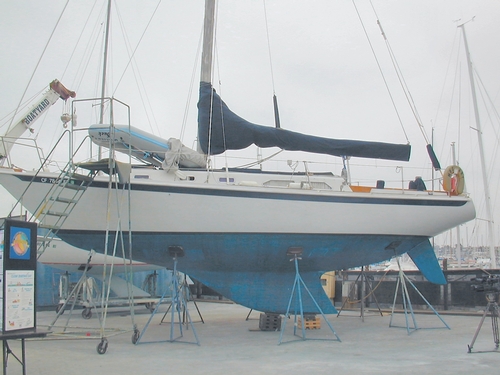Copper antifouling paints "dipped their toes" into US west coast legislative waters this year. California Senate Bill 623 was last amended on June 21, 2011 and was referred to the Appropriations Committee on June 29, 2011. Washington Senate Bill 5436 was passed by the Legislature on April 18, 2011 and signed by the Governor on May 3, 2011; it is now Chapter 248, Laws of 2011. Both bills would increase restrictions on using copper antifouling paints on recreational boats.
Use the Internet links provided above to access exact language and status of each bill. Here is a quick comparison as of June 29, 2011, provided for educational purposes, only:
The WA bill will be fully effective by 2020, apply to recreational boats up to 65' and restrict copper content to 0.5% of antifouling paints.
The latest version of the CA bill is more complicated. It includes provisions for determining whether water quality in marinas and harbors, where low-leach rate copper antifouling paints are used, is moving toward meeting the standard for dissolved copper. It also addresses transient vessels, best management practices for in-water hull cleaning, and the importance of maintaining boating in the economic and social fabric of California. Depending on whether certain conditions are met, copper antifouling paint could be prohibited for recreational boats as early as 2015.
The CA bill states that the Legislature intends to promote the use of nonbiocide paints in order to balance control of aquatic organisms on vessel hulls and the requirements of the federal Clean Water Act.
Both bills exempt boats subject to US Coast Guard inspection and that are engaged in commercial use or carrying paying passengers.
In 2002 and 2003 we conducted a field demonstration to see how well fouling could be controlled with nontoxic hull coatings and in-water hull cleaning. We found that fouling could be controlled on nontoxic epoxy and ceramic-epoxy coatings if they were cleaned more often than typical copper antifouling paints. These durable hull coatings could also withstand vigorous cleaning.
Three of the boats in our demo kept their durable nontoxic coatings for 7-8 years. Our 2002 survey of 200 San Diego Bay boat owners found that copper antifouling paints were replaced on average after 2 and a half years. Thus, the nontoxic coatings lasted about 3 times as long as copper paints. In other words, the owners saved the cost of two haul-outs for repainting by using durable nontoxic hull coatings instead of copper antifouling paints. We are conducting an economic analysis of these long-term results and will report findings when it is complete.
For links to more information on our field demo, performance of the nontoxic hull coatings in our demo for the first 5 years, an in-depth economic forecast for costs to use copper versus nontoxic hull coatings, and a sampler of nontoxic hull coatings, visit the Nontoxic Antifouling Strategies page of our website.
Attached Images:
